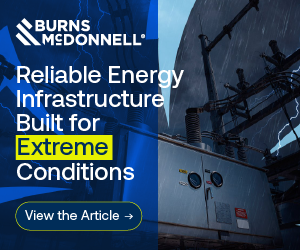A Framework
Alexina Jackson is a creative problem solver who thrives in collaboration, tackling big questions and setting transformational vision. As the founder of Seven Green Strategy and Senior Advisor at Clarum Advisors, Alexina leverages her experience in consulting, law, and technological and commercial innovation. Until 2025, Alexina was a VP in AES’ innovation business and established the company’s vision for a digital-first grid that uses efficient, modern technologies and processes.
As a Director with Clarum Advisors, Molly Podolefsky leverages her experience in economics, decarbonization, corporate sustainability, corporate finance, and the power and utilities sector to help innovative, clean tech companies. Prior to Clarum, Molly spent a decade at Guidehouse working with utility clients managing EE and DSM EM&V portfolios, supporting regulatory compliance and conducting research focused on IoT, smart and connected devices, load flexibility and demand response.
Today’s energy system is built on a platform of natural monopolies intended to deliver economies of scale and generally affordable commodity goods to fuel society. This structure provides reliable, low-risk rates of return, but was not designed for periods of rapid change. As a result, the platform does not effectively anticipate and absorb risk or respond to future uncertainty.

And yet, this is precisely where we find ourselves today in the U.S. energy landscape — a system grappling with internal and external uncertainty, and a lack of commitment to proactively adopting new technologies, regulatory updates, and financial structures.
Utilities and system operators face numerous unknowns as they work hard to anticipate future demand for power, explore integrating evolving technologies, and consider how regulatory structures must evolve to meet the needs of the future grid. The economic context is changing rapidly as well, with tax credits, tariffs, and inflation forming a trio of incentives at the center of domestic economic uncertainty.
Geopolitical events further complicate this scenario, impacting the decisions of all participants in the energy ecosystem. Rapidly shifting regional and national alliances and conflicts heighten the risk in energy investments through price volatility, uncertainty in upstream and downstream markets, and unpredictable trade dynamics.
Within this context, de-risking investment becomes paramount to the continued development of a twenty-first Century energy system. This article presents a set of questions that should be explored and a framework for developing solutions to them, including near-term actions for de-risking investment during the current period of heightened uncertainty. In short, an integrated approach to market awareness and outcome optimization.
Three Key Questions to Drive Investment Certainty
 Alexina Jackson: Given the rapid periodicity of change in the larger ecosystem, navigating the investments in the energy sector today is not about eliminating uncertainty – it is about reducing uncertainty through better information, and then developing solutions that are resilient to a variety of future outcomes.
Alexina Jackson: Given the rapid periodicity of change in the larger ecosystem, navigating the investments in the energy sector today is not about eliminating uncertainty – it is about reducing uncertainty through better information, and then developing solutions that are resilient to a variety of future outcomes.
Uncertainty can cause companies to delay expenditures and investment decisions until confidence in long-term value or near-term strategies is created. The three areas of uncertainty explored in this section drive many of the investment delays in today’s markets.
To unblock investment, the energy ecosystem could analyze the variability of likely outcomes within these areas and their materiality to longer-term value creation. Exploring the following key questions may uncover no-regret investments that are flexible to a variety of future outcomes, revealing more certain investments in an uncertain market.
Are We Creating the Energy System We Need?
Utilities and system operators must resolve whether they are effectively planning, building, and investing in an energy system sufficient for a thriving modern society, and they must do so soon. A clear vision of the future grid is needed to continue delivering a safe, reliable, and affordable system.
Lengthy evaluation, permitting, supply chain, and construction timelines require early action for long-term results. The interconnected nature of the ecosystem and the cost of delay and incremental, ad hoc investment approaches mean that clarity around future infrastructure location and time to delivery is essential.
 Molly Podolefsky: By implementing this framework, utilities and energy sector stakeholders can significantly de-risk their investments. Introducing awareness, monitoring, and solution integration into investment strategy enhances the likelihood of success and uncovers new opportunities for growth.
Molly Podolefsky: By implementing this framework, utilities and energy sector stakeholders can significantly de-risk their investments. Introducing awareness, monitoring, and solution integration into investment strategy enhances the likelihood of success and uncovers new opportunities for growth.
A plan for the future grid, including what to build and when to invest, takes effort, an understanding of technology, and high-quality information about the system. However, foundational information such as data inputs for load growth forecasts are uncertain, bringing into question the reliability of the outputs and any insights.
Unreliable forecasts in turn affect investment decisions, prolonging status-quo behaviors, delaying timelines to new technology deployments, and creating a slower, more expensive system.
Indeed, an analysis by the Lawrence Berkeley National Laboratory in Joule, 2025, revealed that for new generation projects, network upgrade cost uncertainty and interconnection delay can inflate interconnection costs to more than thirty percent of total project cost.
When today’s utility investments are misaligned with the future needs of our energy system, we create future urgency to course correct under even greater time constraints and expense. As a result, utilities must resolve today how they will build an energy system that efficiently and effectively meets future needs. Addressing this question as soon as possible improves market certainty, minimizes risk, and lays the groundwork for optimal investments.
How Long Will Economic Incentives (or Disincentives) Affect Investments?
 Figure 1 - Framework For De-risking Investment
Figure 1 - Framework For De-risking Investment
Economic incentives play a key role in driving investment strategies in the energy sector. However, the domestic economic landscape today is filled with uncertainty. Investors must effectively anticipate and hedge against changes in tax credits, tariffs, and inflation, which often impact investment feasibility and success if not appropriately managed.
In such an environment, it is not unusual for companies to delay investment decisions until incentives are more certain. In the energy sector, targeted incentives are often slow to change, yet have an extended impact on returns because of the time it takes to build infrastructure and the life of those projects once in operation. Broader economic forces may move faster, and impact total system costs up and down the market value chain.
For example, the ITC and PTC tax credits that support generation project viability may be rolled back or adjusted, affecting the financing opportunities for renewable projects. The tariffs imposed on imported goods in early 2025 are projected to increase project costs significantly if they remain (which is also uncertain), impacting supply chain dynamics and appetite for taking on commercial risk.
Inflation adds another layer of risk that increases the cost of capital and thereby stalls or reduces the total output of investments. One indicator of inflation is the Consumer Price Index, which showed a year-over-year increase of 2.8 percent in early 2025 but still has not calmed concerns of potential stagflation.
Understanding these variables and their interactions is essential for energy investors to make sound decisions when deploying capital. Once incentives and disincentives are well understood, they can be commercially allocated, hedged against, or avoided through innovative structures.
Or, for the right no-regret or flexible investment, such risk may be seen as within the acceptable return envelope under various incentive outcomes. As a result, investors need a nuanced understanding of the materiality of incentives and creative solutions to how we continue building a future-proofed energy system.
How Will Geopolitical Conflict Impact Power Supply?
The interplay between domestic actions and the global geopolitical context creates additional uncertainty for energy investments. In 2025, according to the European Central Bank, as economic, sovereignty, and military conflicts escalate, trust in global relationships diminishes. Geopolitical risk, combined with the opportunity for market speculation, directly and dramatically impacts price volatility for oil and gas supplies.
Tensions also affect downstream aspects of the power supply, prompting utilities to reassess their energy security strategies. The resulting push for onshoring and the prioritization of energy independence raises the question of whether utilities are investing proactively to meet future requirements or reactively based on near-term pressures.
As national security is increasingly tied to “AI-dominance,” legislators, regulators, and utilities must answer fundamental questions about planning and investment in energy systems under geopolitical uncertainty. Against this backdrop we must prepare for the impact of conflict on power and our energy needs today and in the future. Only through effective planning for variable impacts can utilities and other investors secure their place and ensure energy stability in a rapidly changing world.
An Investor Framework for Awareness and Optimization
Given the rapid periodicity of change in the larger ecosystem, navigating the investments in the energy sector today is not about eliminating uncertainty — it is about reducing uncertainty through better information, and then developing solutions that are resilient to a variety of future outcomes. In an uncertain environment, better information and flexible solutions can significantly enhance investment success.
Utilities and other energy investors can improve the quality of their strategic decisions and reduce the potential for error by leveraging a combination of technical insights, accurate data, and expert guidance. Strategic decisions must be monitored against key developments in times of rapid change, discerning between decision-points that matter and those that are mere distractions.
A focus on materiality and impact reduces wasted energy and enables timely action on issues critical to investment. By thoughtfully integrating market-ready technologies and commercial and regulatory solutions, investors can build flexible strategies resilient to multiple future outcomes.
In the Figure, these three themes — awareness, monitoring, and integration — come together in a framework for de-risking investment. Through this framework, utilities and other energy investors improve their awareness of key risks and develop strategies for mitigating risk and optimizing investment through de-risking activities.
The framework’s focus for risk awareness is grounded in the three key questions posed above and should be resilient to changes in the larger domestic and global context. Approaches to mitigating and optimizing investment risk presented in the second column are arguably non-exhaustive and certainly overlapping categories, though they are placed by the questions they impact most directly.
Investment de-risking activities, shown in the third column, comprise actions investors can take to inform decisions, watchtower changes and trends, and better integrate solutions to build resilience against uncertainty in the investment process.
See Figure One.
By implementing this framework, utilities and energy sector stakeholders can significantly de-risk their investments. Introducing awareness, monitoring, and solution integration into investment strategy enhances the likelihood of success and uncovers new opportunities for growth.
This approach is an important toolset that Clarum Advisors deploys in its commitment to help clients — from utilities to cleantech companies — make future-proof investments in the energy system we need.



